Newbery/Caldecott 2022: Fall Prediction Edition
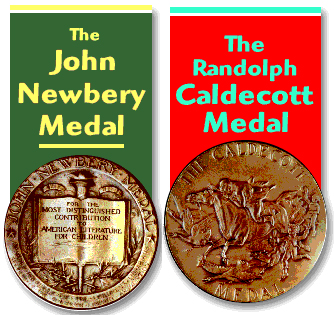
Has ever a Caldecott/Newbery prediction year faced such interesting challenges? Oh sure, 2020 might count if by “interesting” you mean “harrowing and terrifying”. But for those of us that hoped that 2021 might restore some semblance of normalcy, no such luck. Some of the largest publishers didn’t send out physical galleys this year, making discoverability a real issue for a lot of creators. Then too we’ve had to deal with shipping delays and publication dates getting pushed back and back and back.
AND YET! What a gorgeous crop of books we’ve seen this year. Books unafraid to tackle issues that a great swath of adult titles would be terrified to handle. Books that try new things. That push their own limits. Books anyone would be proud to have in their home library.
ADVERTISEMENT
ADVERTISEMENT
Today, I’m considering those books that I truly think have a decent shot at going for the gold. Each and every one of these books is a winner in my eyes. Just see if you don’t agree:
2022 Caldecott Predictions
Bright Star by Yuyi Morales

Historically Morales has been snubbed on a repeated basis by the Caldecott committees. Sure in 2015 she got an Honor for Viva Frida but that’s about it. Dreamers, long predicted to take home the gold, was shut out entirely the year it was released (and, for what it’s worth, you can find it mentioned as an important plot point in this year’s magnificent science fiction horror middle grade, The Last Cuentista). This year’s Bright Star may pick up where Dreamers left off. It tackles twin issues of children alone at the border and environmental concerns. It starts off slow then builds into heartbreak. And from a purely artistic standpoint the book is also a brilliant amalgamation of styles. Computer art yes, but also embroidery and other methods. Bright Star may have some strong defenders on this year’s Caldecott committee. Wouldn’t be surprised to see it take home something.
Mel Fell by Corey R. Tabor
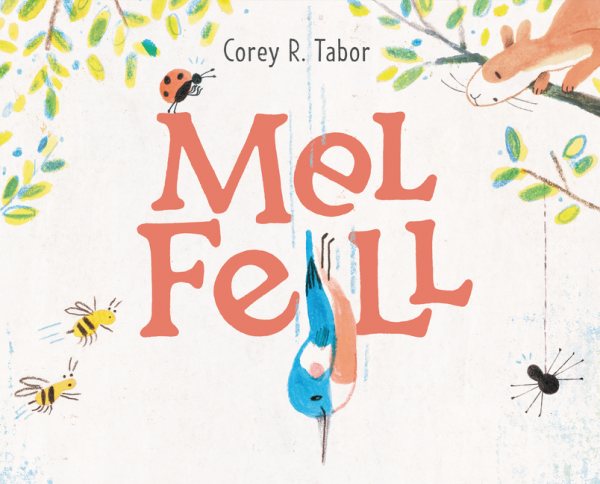
It can be hard, sometimes, for award committees to remember that in the midst of all these amazing books that talk about struggle and bravery and fighting for what’s right, there’s also room enough for tales that don’t have anything to do with all of that. Not that Mel Fell isn’t hiding a doggone good STEM message under its proverbial folded wings. Look at that little nutter. He’s a sneaky one. This book has big Tops & Bottoms energy and the art is superb, but let’s talk about how integral the design is to the storytelling. Let’s talk about how Tabor (poised to become the next big thing once he grabs hold of a shiny little award in this category) interweaves humor into his picture books so well. Throughout the year I’ve noticed folks increasing their passion for this book. Plus, it’s always nice to see Caldecotts of one sort or another go to books for the younger readers. Storytimes everywhere would be grateful if this got something.
Milo Imagines the World by Matt de la Peña, ill. Christian Robinson
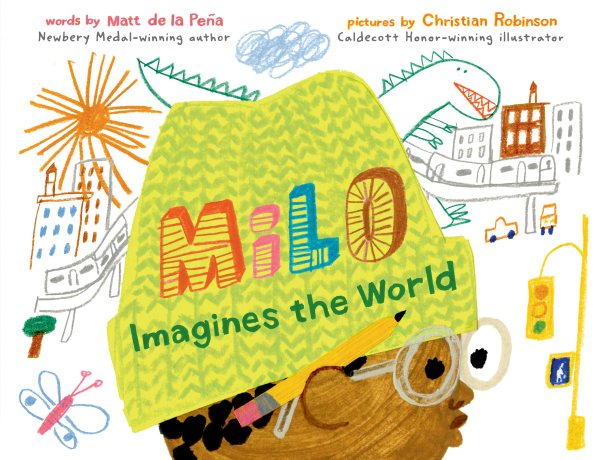
Robinson’s in a bit of a bind. I doubt that this is weighing on his mind at all, but really, did he have to do two really great picture books in the same year? The Caldecott doesn’t really have to worry about “splitting the vote”, but one still has to worry a little that the committee might forget about this book in the wake of his work on Nina. You may notice that Nina isn’t on my prediction list today, and that’s not because I think the art isn’t deserving. It’s more that I feel like Robinson purposefully constrained himself with that title. To better show off Nina Simone’s life, he focuses all the art in the second half on her piano. It’s a cool technique but I think that Milo here might be a better use of his skills. Here, because he’s not constrained by the limitations of a real person and their life, he has room to play. Milo’s imaginings, as well as the world around him, strike you as bigger. Interestingly, for most of the book Milo too is constrained. He’s inside a subway car, but his mind travels far beyond its walls. Combined with a message about the prejudices and assumptions we make about others (and ourselves) this is the title that has a better chance at Caldecott gold this time around.
The People’s Painter: How Ben Shahn Fought for Justice with Art by Cynthia Levinson, ill. Evan Turk
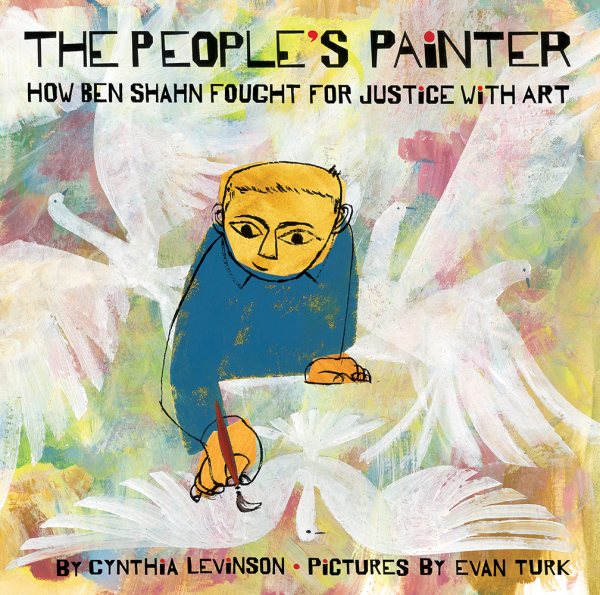
It is truly shocking what an amazing year it’s been for books about and by Jewish people. In the past it was Holocaust/Anne Frank or nothing. This year, just look at it all! Magnificent bios like this one or Osnat and her Dove about the world’s first female Rabbi. I’ve read stirring middle grade novels set almost entirely in the world of Jewish funeral homes, like Sorry for Your Loss, and goofball board books like the highly amusing Rosh Hashanah with Uncle Max by Varda Livney. I’m not saying that it’s anywhere near enough, but it’s been a nice change from some of our past years. Now I will always be in Evan Turk’s corner. I think that as an artist he’s somehow evaded the public accolades he deserves, and I would love to see that change. Maybe it can with this book. It’s a difficult case of an artist paying homage to another artist but Turk manages to evoke without replication. Definitely worth looking at a third, fourth, or fifth time, since I think you’ll see something new in it every time that you do.
The Rock From the Sky by Jon Klassen
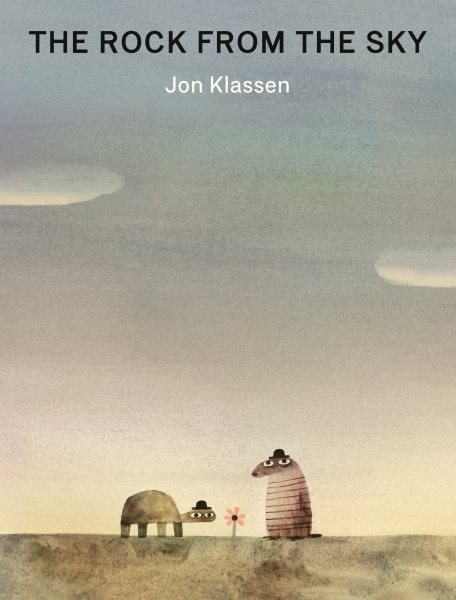
“Do we really need another Jon Klassen book on our list?” These were the words I heard when my library committee was deliberating our recently released 101 Great Books for Kids list of 2021. It’s a legitimate question. Unlike some of the other people on this prediction list, Klassen’s already received a fair share of attention, praise, and awards. This makes my next question almost a philosophical one then: If the Caldecott is intended for the best of a given year, and an artist does their best work, but their best work comes out in a particularly strong year then . . . what the heck do you do? Dunno. This also falls into the Got the Award for the Wrong Book category, I’d say. I liked his Caldecott Award winner, but I like this book better. Ah well.
The 1619 Project: Born on the Water by Nikole Hannah-Jones and Renée Watson, ill. Nikkolas Smith
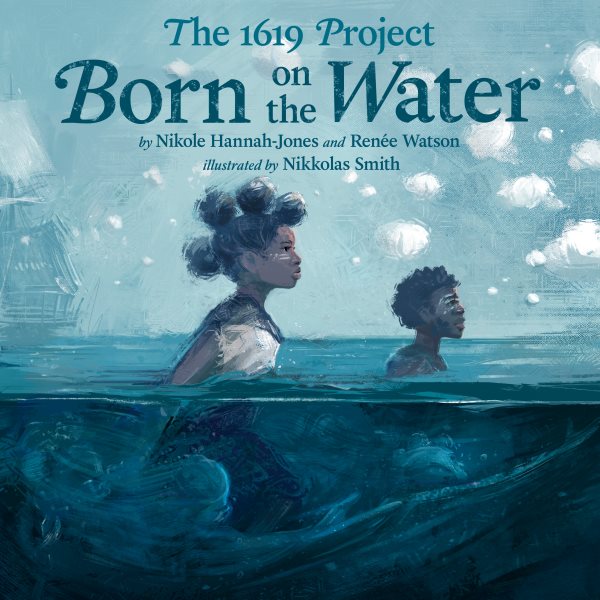
You know, any other year, I’d say that this was the frontrunner. If it wasn’t for the presence of Unspeakable, I’d call this my hands down winner. I mean, just look at all that it has to offer! First time picture book illustrator Nikkolas Smith is working overtime on the art, getting highly detailed with elements like the endpapers, but also showing true joy and happiness and sheer movement in so many of these pages. The tonal shifts alone deserve consideration. So too the fact that this introduces us to an entirely new narrative when we talk about the enslaved and America. I also cannot help but mention that it would be extra grand for a Caldecott to go to a book with the words “The 1619 Project” in its title, just so that we can upset all those anti-Critical Race Theory folks around the country.
Unbound: The Life and Art of Judith Scott by Joyce Scott with Brie Spangler, ill. Melissa Sweet
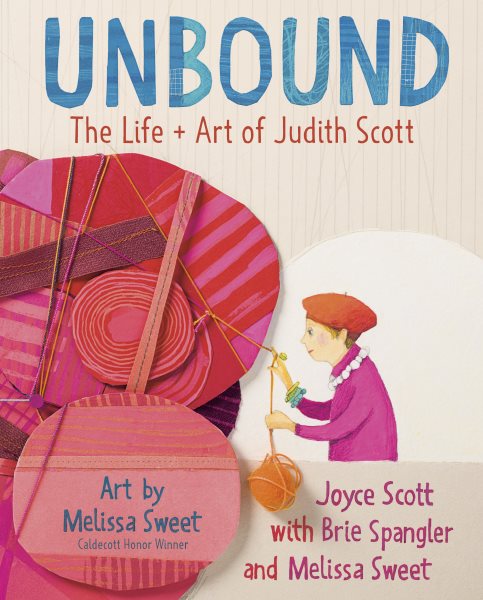
Putting aside the fact that there has never been a Caldecott Award or Honor winner that featured someone with Down syndrome (and I think that this is a pretty accurate blanket statement to make), let’s talk about what Melissa Sweet does with this book. Sweet’s won Caldecott Honors before. She won for A River of Words and in 2015 for The Right Word, both by Jen Bryant. Both picture book biographies, after a fashion. Now Jen Bryant isn’t around, but let’s assume she’s not necessarily Sweet’s lucky charm. Like the aforementioned The People’s Painter, Sweet too is in the unenviable position of needing to bring to mind an artist’s work without looking like she’s trying to copy it. She is aided in this endeavor in the fact that artist Judith Scott worked primarily in sculpture. This allows Sweet to use mixed media to bring to life the work itself. And while I do wish more of Scott’s actual work could have been featured in the endpapers, this book really brings up hitherto unexplored questions in children’s books about what art is, and what it can mean to a single person’s life.
Unspeakable: The Tulsa Race Massacre by Carole Boston Weatherford, ill. Floyd Cooper

It’s not simply that we lost Floyd Cooper this year. It’s not even the fact that we lost him far too soon. It’s both of those things combined with the subject matter, Weatherford’s sheer care with the text, and the fact that it really and truly is some of Cooper’s best work. I’m not even going to take you inside. Let’s just look at that cover. Look at what precisely he’s doing here. The daughter on the left, is reaching for her father’s hand, only they haven’t quite grasped one another yet. He’s in motion, tie blowing back, looking ahead so as to protect his family. The mom places a protective hand on her baby’s head, but that small child practically has a spotlight on her face and she’s looking at us. She’s looking dead straight at us. And in her expression isn’t anger, but the look a kid has to have when events around them have spiraled out of control and they are wholly reliant on the adults around them to take charge. A kid that looks at this cover knows that something horrible is happening. Something unspeakable. Now imagine reading a whole book of art like this. If you were to do a page-by-page analysis, you wouldn’t find a single one out of place. That is why it’s going to win the Caldecott Award this year. I don’t know the last time the Caldecott was awarded posthumously, but if ever there was a time for it to happen, it was now.
Wishes by Mượn Thị Văn, ill. Victo Ngai
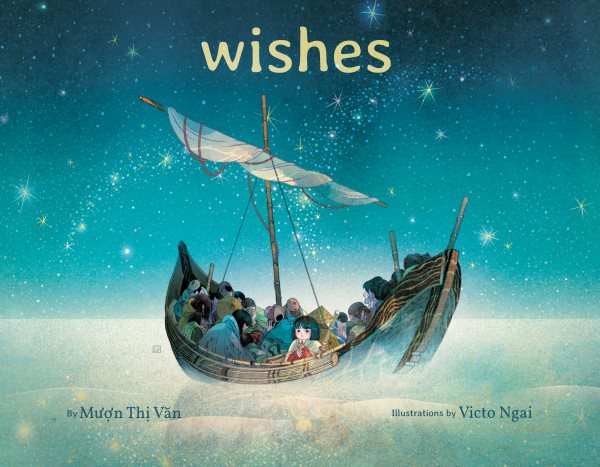
Don’t count out Ngai on this one. As you’ve no doubt seen, 2021 turned out to be a shockingly strong picture book year. Of the books I’ve listed on this prediction list, they’re just a smidgen of the legitimately good and worthy titles the Caldecott committee is going to have to decide between. I don’t envy them the task. Mind you, I’ve always been in the More Honor Books = Better Year camp. In this light, I’m trying to figure out how much of a chance Wishes has. Ngai was completely ignored when she illustrated Dazzle Ships all those years ago, but that book wasn’t as personal as this one. Here we have Mượn Thị Văn’s own story. But Caldecotts are awarded, as all literary awards are, because of their connections not simply to the storytelling, but also to the world at large. Books like Born on the Water and Unspeakable have a leg up because they relate to a lot of what was discussed in 2021. Wishes speaks about refugees, something that Americans think too little about. I would like very much for this to get an Honor, but I fear it may be shuffled aside at the last minute. Prove me wrong, committee!
2022 Newbery Predictions
This will be the Newbery’s 100th birthday, by the way. Originally established in 1922, all eyes will be on this year’s winner. Expect to see a lot of people doing retrospectives between the first Newbery winner (The Story of Mankind) and the latest winner, with discussions of how much has changed in the children’s publishing industry, and in terms of content, over the years. I’m not including the 1619 Project: Born On the Water on this list, but if it were to win, it would provide a magnificent counterpoint to Hendrik Willem van Loon’s first winner. Not that the Newbery committee can take that into consideration… but still…
Amber and Clay by Laura Amy Schlitz
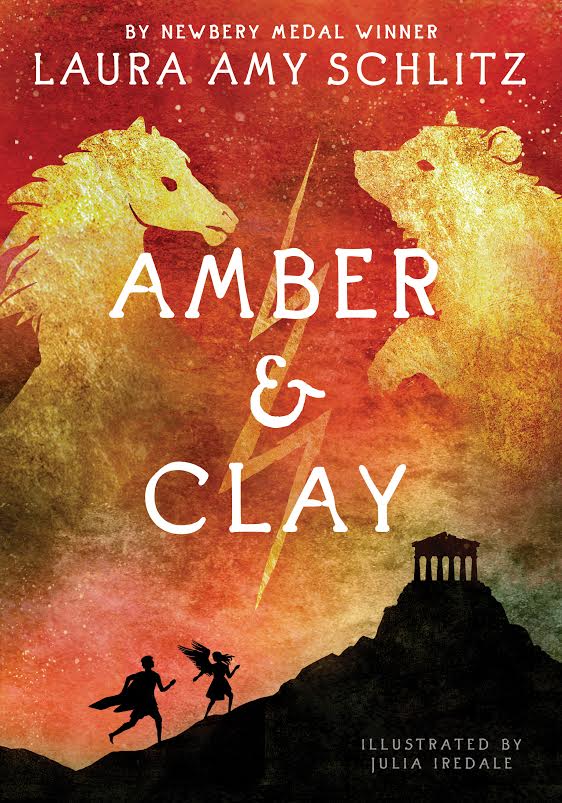
Experimenting with any text in a work of children’s fiction is a difficult game to pull off. You’re far more likely to see it done in YA titles, honestly. It’s part of what I respect so much about Laura’s work. She never really, ever, does the same book twice. Now the Newbery committee may know that, but they can’t take it into consideration when looking at Amber & Clay. All that they’re going to be able to do is to to look at the text. And when it comes to great writing, you cannot go wrong with Laura Amy Schlitz. Few rival her sentences. Indeed if there was anyone out there working on her same level it would have to be fellow Candlewick Press author Kate DiCamillo and her book . . .
The Beatryce Prophecy by Kate DiCamillo, ill. Sophie Blackall

I think I mentioned in my Summer Prediction edition that the Newbery loves a good medieval tale. Particularly if you can work in just a hint of religion in there in some way. Like the aforementioned Jon Klassen, DiCamillo doesn’t lack for love from the literary community. This is simply because she is very good at what she does. She both writes well and is equally interesting to both adults and children. I have witnessed firsthand her young fans defending her works. And this book has a homicidal goat in it, so right there I think it may have a leg up on the competition. It would surprise me greatly if this book didn’t get at least an Honor this year. Could it take home the gold? I feel as though that’s less certain.
Fallout: Spies, Superbombs, and the Ultimate Cold War Showdown
by Steve Sheinkin
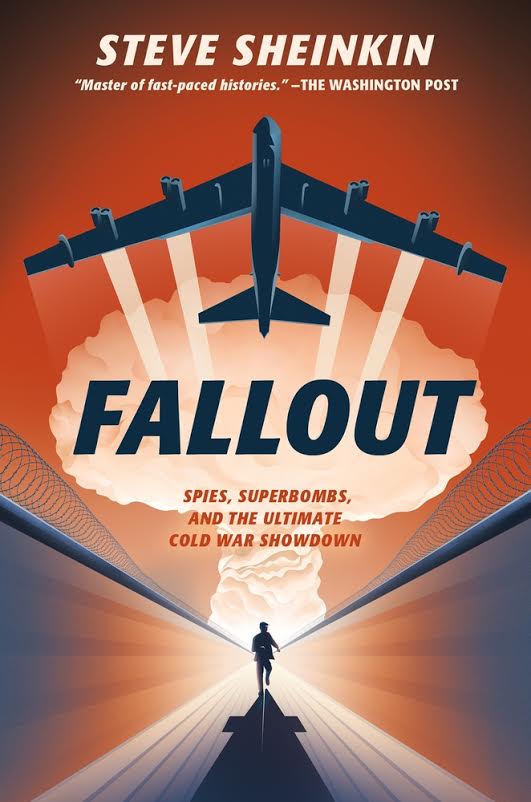
With every Steve Sheinkin book, you have to weigh the age range of its readership. As many of us know, the Newbery goes up to the age of 14. This allows the occasional YA title, marketed as such by its publisher, to slip under the radar and onto the final list of winners. And Mr. Sheinkin has more than once done just that. As an adult I was fascinated by so much of this book. It’s going to be up to the Newbery committee to determine if the same can be said for a child readership as well.
The Genius Under the Table: Growing Up Behind the Iron Curtain by Eugene Yelchin
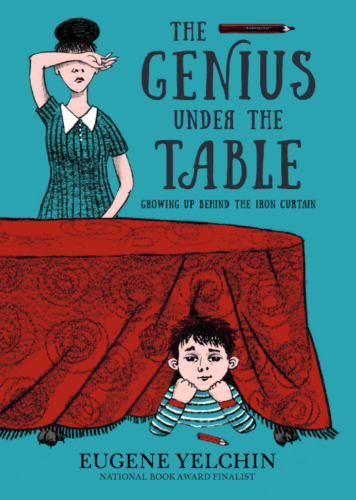
It may seem odd to call out a book on surviving in Cold War Russia as the laugh-out-loud title of this list, but that’s the way the cookie crumbles. It was very gratifying for me to see, this year, a slow increase in the number of people that have not only read this book but come to love it as I have loved it. Yelchin’s got his own fair share of accolades, including a Newbery Honor for Breaking Stalin’s Nose (something the cover of this book chose not to mention, curiously). I like this book better than that one anyway. But then, I’ve always had a soft spot for humor.
Gone to the Woods: Surviving a Lost Childhood by Gary Paulsen
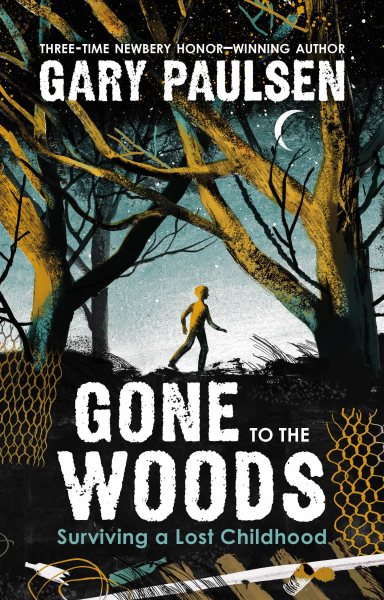
We lost a LOT of truly great writers and artists this year. Paulsen’s death was a personal shock to me, particularly as I’d interviewed him about this book just earlier in the year for the American Writer’s Museum. It is not his last book, but it may well have been his most personal. In it, you can not only see the seeds of the books he would write later in his life, but also the birth of a burgeoning writer. This book also lauds librarians, and Newbery committee members are not impervious to flattery. This may yet be another posthumous award, though I do not think they’d give it the gold outright to it. Then again, I’ve been known to be wrong.
Lotería by Karla Arenas Valenti

Full disclosure, I’ve had the pleasure of speaking alongside Ms. Valenti while promoting my own middle grade (Long Road to the Circus) and I can tell you that she is a heartfelt, generous, engaging speaker. Seriously, if you can get her to speak to your students, you will not regret it. Likewise, you won’t regret seriously considering this book for an award. If I have a soft spot for humor then I also have a soft spot for philosophy. In this book, Life and Death discuss the nature of free will within a human lifespan. As they do so, a single human is tossed back and forth in the midst of a game they play. You may walk into this book expecting just another fun and silly fantasy, but you end up with a gut punch ending that earns that hit. One of the pleasures of the year and worthy of consideration.
Pity Party by Kathleen Lane
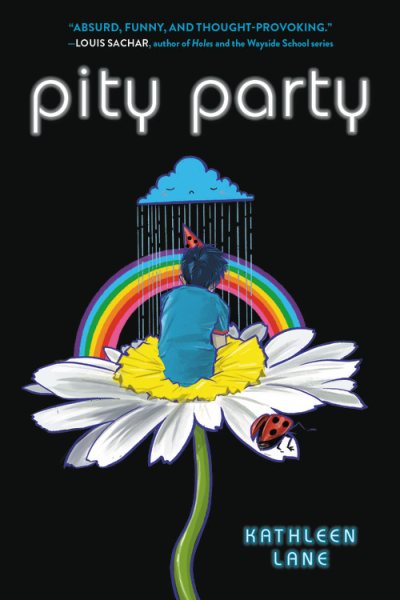
And well, if I’m already confessing to presenting with Ms. Valenti, then I may as well also confess that if you pick up a copy of Pity Party you’ll find a blurb of mine on its back. I mean, that’s not much. I blurb stuff sometimes. Doesn’t mean I think the books should always win awards or anything. Yet like Amber & Clay (a book that would seemingly have very little in common with Lane’s title) this book distinguishes itself because it plays with form. There are unnerving metaphorical moments and jokes. There are repeated storylines and this general sense that the ground is always shifting under your feet JUST like it does in middle school. Oh, I’m aware that it’s not a traditional Newbery award candidate and that it’ll probably be scrapped in the first round, but I truly do hope that the committee takes a little time to discuss the benefits of the short story form. It’s not like a lot of them ever win Newberys. Time to change all that?
Playing the Cards You’re Dealt by Varian Johnson

A co-worker of mine called Johnson’s latest “a robust and immersive character study that feels fully formed and multi-dimensional.” It’s hard to argue against that. This is a book where the story leads up to a climatic card game even though the card game isn’t the point of the story at all. We’re talking about tall tale hyperbole, humor, grief, and (as my same co-worker told me), “lively, compelling and compassionate (and yes responsible) storytelling.” Johnson’s been pulling out great books for years, but this title tops everything else he’s produced. I just like that he always has to have fun with his books. Even when they’re about serious subjects, you can just tell that he wants his young readers to enjoy what they’re reading. Something to be said for that.
The Raconteur’s Commonplace Book by Kate Milford, ill. Nicole Wong
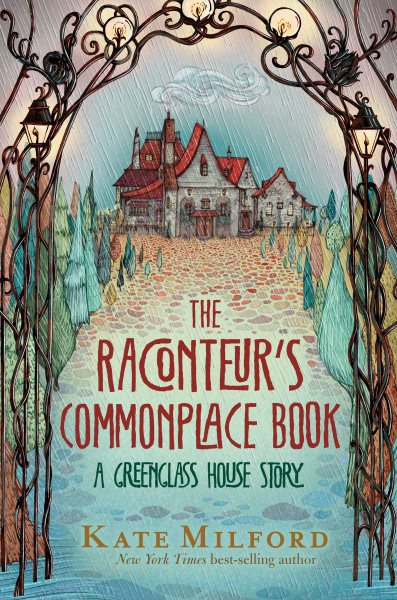
To be clear, I am perfectly PERFECTLY aware that this book’s chances of winning a Newbery Medal or Honor are slim to none. It’s a Wild Card nomination. A book that can connect to the larger “Greenglass House” series but stands perfectly strong on its own. I know that its scintillating combination of magic and storytelling won’t be for everyone. And yet, I can’t help but hope that maybe a quorum of people on the committee will be like me. They’ll love the slowly unfurling puzzle-like aspects of the plotting and the notable homage to storytelling as an art.
Root Magic by Eden Royce
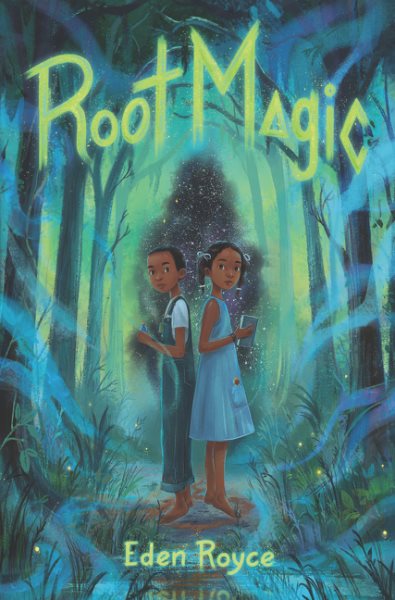
ADVERTISEMENT
ADVERTISEMENT
I’m organizing the books on this list here alphabetically by title, so it’s amusing to me that we have our two ghost stories side by side. Royce is an author to watch, no question about it. She has a very good sense of how to incorporate family lore into a story while not skimping on the horror. That it’s also historical fiction, in a way, doesn’t detract from these other elements. On the contrary, it heightens the narrative. Imagine if Mildred Taylor’s books had magic in them. That’s the vibe I got off of Root Magic.
Too Bright to See by Kyle Lukoff
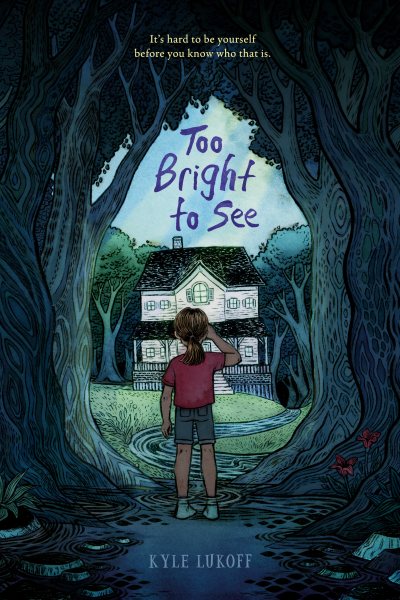
Our other ghost story book! Of course, this is the only book on today’s list that also is shortlisted for a National Book Award. And, quite frankly, it deserves to win. Now there’s a theory that if you win a National Book Award, or are even nominated, that the Newbery committee takes that into consideration and is less inclined to honor you. We all know that that can’t be true, but we also all know about unconscious bias. Still, considering the revolutionary nature of Lukoff’s writing (Middle Grade Trans Horror Narratives has yet to become a common BISAC subject heading) I’d say this story has a good strong chance this year.
While I Was Away by Waka T. Brown
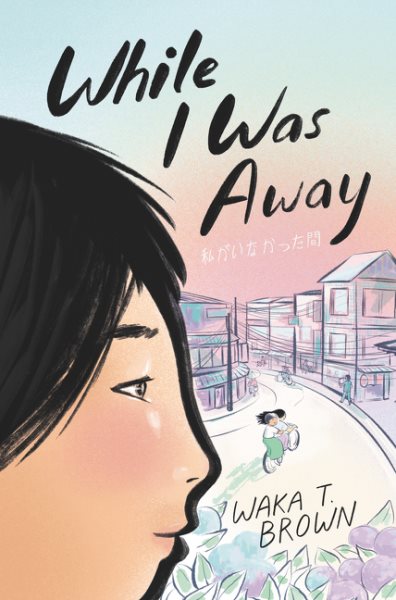
And coming in on the inside track is Waka T. Brown!! Waka for the win! This year I vowed that I’d pay extra close attention to those books that work their subtle magic on the people that read them. There’s a certain kind of book that is capable of doing this. My library committee for the 101 Great Books for Kids list is my own personal litmus test, and this was the book that stuck hard in the hearts of a lot of committee members. And while this ultimately doesn’t mean anything, I was gratified to see how high this book has also risen on the Goodreads Newbery 2022 prediction list. All this indicates to me that Ms. Brown may have written a slow burn memoir that gets itself a shiny gold sticker.
The Year I Flew Away by Marie Arnold
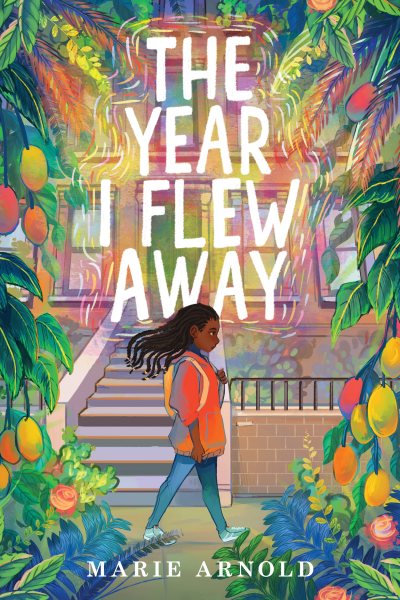
The first thing to understand is that Arnold is working at a distinct disadvantage with this book. Put simply, it’s too funny. Adults have a weird way of gauging how “important” one book or another might be, and it all comes down to humor. The less laugh lines, the more distinguished they tend to find the work. Never you mind that mixing funny with very real social issues is a dance that causes most people to trip over their own feet (so to speak). Ms. Arnold pulls off this dance with aplomb and I surely hope she gets rewarded for it.
That’s it! Let me know what I missed that you love and think has a chance.
And, as ever, be sure to check out Calling Caldecott and Heavy Medal for more possible winners.
Filed under: Best Books, Best Books of 2021, Newbery / Caldecott Predictions
About Betsy Bird
Betsy Bird is currently the Collection Development Manager of the Evanston Public Library system and a former Materials Specialist for New York Public Library. She has served on Newbery, written for Horn Book, and has done other lovely little things that she'd love to tell you about but that she's sure you'd find more interesting to hear of in person. Her opinions are her own and do not reflect those of EPL, SLJ, or any of the other acronyms you might be able to name. Follow her on Twitter: @fuseeight.
ADVERTISEMENT
ADVERTISEMENT
SLJ Blog Network
Halloween is Coming: 31 New Books to Celebrate Spookytime
Review | Chickenpox
Talking with the Class of ’99 about Censorship at their School
Take Five: New Middle Grade Books in October
ADVERTISEMENT

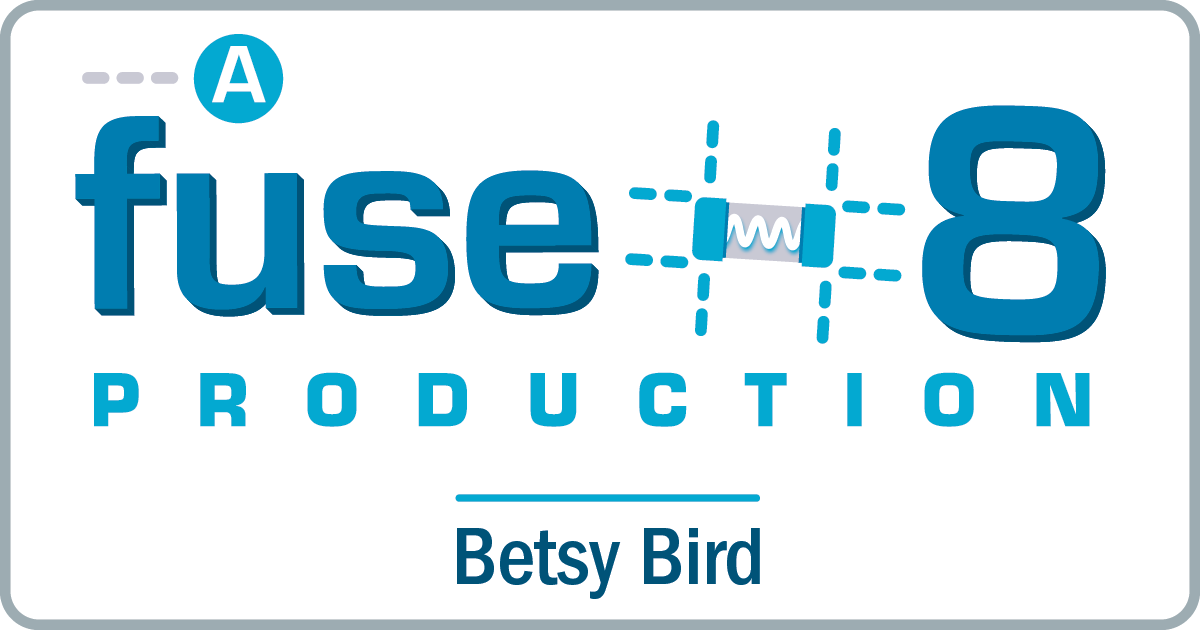




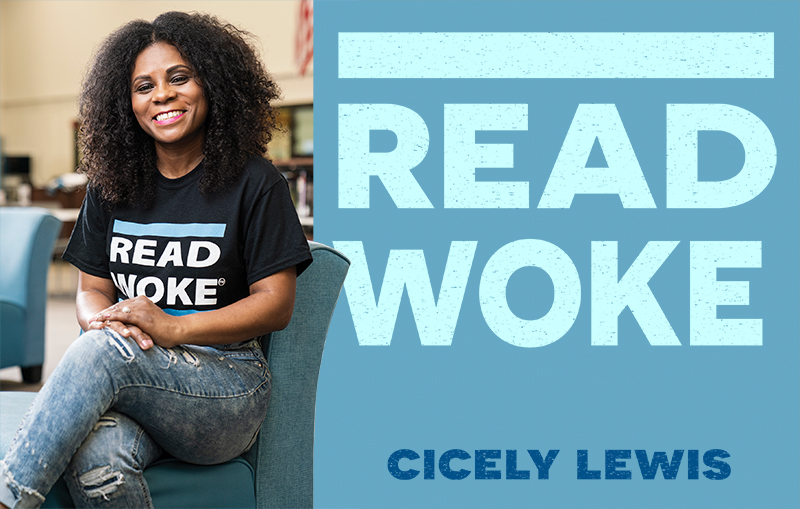

I found Root Magic totally gripping, and one scene scared me more than anything I’ve read this far in my life. I hope it gets some positive nods.
Seconded! Nothing like seeing someone tear their flesh in half. Memorable!
Thank you for your choices. Your recommendations help guide my reading each year.
Thank you, Judy!
I don’t see Cress in your list? But I’m with you for Unspeakable.
Oh, do you mean Watercress? That book… it’s really difficult. I’ve had long talks with other librarians about it, and in the end, though beautiful, I’m not sure it’s going to hold up. But, of course, I could be wrong.
oh no do I need to reevaluate Watercress for possible issues? that’s one of my favorites this year1
Also if anyone wants to participate in the Heavy Medal conversation you have until end of the day today to submit two nomination titles for November!
https://blogs.slj.com/heavymedal/2021/11/01/november-mock-newbery-nominations-add-two-more/
Well, it was an interesting discussion within one of my library’s committees. There was nothing problematic about it, I’d say. It was more a question of audience. Members of our committee felt that this was aimed squarely at the adult readership, in spite of the fact that it came from a child’s p.o.v. and was based on memory. But in terms of word choice and tone, they thought it was meant to appeal to the buyer rather than the young reader. A debatable position, but one I’d be interested in hearing folks discuss.
Our Mock Caldecott group feels Wishes is a strong contender, as well, yet we are wondering if the illustrator is eligible for the Caldecott. We have tried to do some digging but have not been able to confirm or deny. Any help from you all would be lovely!
Seems like I’ve seen a lot of buzz for Starfish by Lisa Fipps. Also Red, White, and Whole by Rajani LaRocca (currently 1 and 2 on Goodreads). I’m also always rooting for books for younger kids as Newbery picks, which this year could be Maybe, Maybe Marisol Rainey by Erin Entrada Kelly or Henry vs. the First 100 Days of School by Emily Jenkins. And finally, National Book Award finalist The Legend of Auntie Po by Shing Yin Khor!
You might be interested in my article in Tablet about the best Jewish children’s books this year: https://www.tabletmag.com/sections/community/articles/best-jewish-childrens-books-2021.
Also, I personally find the phrase “Jewish person” really grating. You wouldn’t say “Christian person” or “Muslim person.” I’m a Jew!
I’m sure plenty of Jews will disagree, though. (As we say, two Jews, three opinions.)
Rachel, I agree with you about the irritating nature of the term “Jewish person,” but I think that we have to put it in context. It generally proceeds from sensitivity to the racialized use of “Jew,” as, in and of itself, an insult. That is a terrible reason, but I think it is the best explanation as for why a bland and otherwise puzzling term has become the norm. I’m with you on being totally comfortable as identifying myself as a “Jew,” but when the term is applied by non-Jews it has, sadly, taken on a different connotation.
Thank you for your Tablet piece. There were so many wonderful Jewish-themed books this year. I doubt that any of them, including “The People’s Painter,” will win ALSC awards, but I hope that I’m wrong. Thanks to Betsy for highlighting this and other outstanding books about Jews/Jewish people (your choice!) on her blog.
Yes, I agree that’s where it comes from, but it irritates me both in terms of my identity and in terms of grammar/style. 😉 And I’m so glad you saw this comment and the piece, Emily – I was going to send it to you directly, but I see I don’t need to!
Oo. Good point. Though saying “Jews” feels strangely awkward to me too. Let me know if it’s preferred. I can change.
Great list. I’ve been trying to get my hands on Esther Didn’t Dream of Being Queen all year, but none of the libraries in my consortium carry it (doggone it). So glad you included Sorry For Your Loss, which I really enjoyed. Have you seen The Unfinished Corner by Dani Colman? Just got my copy in today and I’m looking forward to reading it. I haven’t seen a good Jewish fantasy graphic novel since the Mirka series.
Putting holds on a slew of the picture books you mentioned now!
Great! As I said, I think opinion on Jew/Jewish person is divided among Jews, although I think it is non-Jews who are most uncomfortable with using just “Jew.” “Jewish person” is not offensive – I just don’t like it. No need to edit.
I don’t know The Unfinished Corner. I’m neither a huge fan of fantasy or graphic novels but I will definitely check it out.
Fantastic list! I’ve been hoping, though, that Zonia’s Rainforest will take a Caldecott or an honor; it’s just exquisite and meaningful and full of hope. (Wishes is high on my list as well, and so is Bright Star.) For the Newberry, I favor Lotería or Root Magic as well — or Starfish by Fipps. But there were soooo many stunning books this year! The picture book selection was especially dreamy … I also adore Beautiful Me, How To Wear A Sari, Anita and the Dragons, Do You Speak Fish, and Hello Star. The Cot in the Living Room was lovely, too. HOWEVER I still have my heart set on Zonia’s Rainforest. I just adore that sweet little book so much!